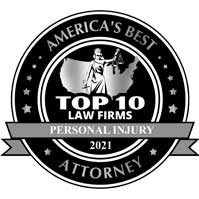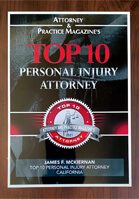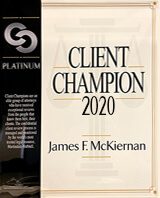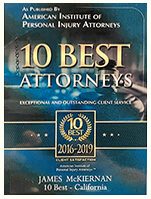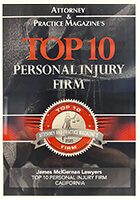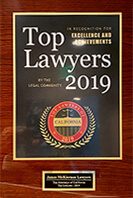I Got Hit by a Car and They Drove Off: What to Do

The shock of impact is bad enough, but the feeling that follows when you realize the other driver is gone is even worse. That sinking thought, “I got hit by a car and they drove off,” can leave you feeling completely helpless and alone on the side of the road. Your mind races with questions about your safety, your car, and how you’ll possibly cover the costs. It’s a chaotic and unfair situation. But you are not powerless. There are clear, specific steps you can take right now to protect yourself, document what happened, and start the process of getting compensation. This guide will walk you through exactly what to do, one step at a time.
Key Takeaways
- Act Methodically at the Scene: After ensuring your safety, your next steps are crucial. Immediately call 911 to create an official record of the incident, and then thoroughly document everything with your phone—from vehicle damage to the surrounding area.
- Your Own Insurance Is Your Primary Resource: Don’t assume you’re out of options if the other driver disappears. Your Uninsured Motorist (UM) coverage is designed for this exact scenario, allowing you to file a claim for your medical bills and repairs through your own provider.
- Seek Professional Help for Your Health and Your Claim: Adrenaline can hide serious injuries, making a prompt medical evaluation essential. To handle the complex claims process, consider speaking with a personal injury attorney who can protect your rights and deal with the insurance company for you.
Your First Steps After a Hit-and-Run
The screech of tires, the jolt of impact, and then… the other car is gone. A hit-and-run is a jarring experience, and it’s easy to feel overwhelmed. In these first few moments, taking a few key steps can protect your safety and your rights. Let’s walk through exactly what you should do, one step at a time.
Prioritize Your Safety
Before you even think about the other driver or your car, think about yourself. Your immediate safety is the top priority. If you’re in the middle of the road, get to a safe spot as quickly as you can—a sidewalk, the shoulder, or a nearby parking lot. Turn on your hazard lights to alert other drivers. The shock of the accident can make it hard to think clearly, but your first job is to get out of harm’s way to prevent another collision. Don’t try to chase the other driver. Your focus should be on securing the scene and ensuring you and any passengers are out of danger.
Check Yourself and Others for Injuries
Once you’re in a safe location, take a moment to assess yourself for injuries. Adrenaline can mask pain, so do a careful check. Are you bleeding, dizzy, or in pain? If you have passengers, check on them too. Even if you feel fine, it’s incredibly important to get a medical evaluation later. Some serious conditions, like concussions or internal injuries, don’t always show immediate symptoms. Seeing a doctor creates a medical record of any injuries from the crash, which will be vital for your insurance claim and any potential legal case. Don’t dismiss any discomfort as minor; let a medical professional make that determination.
Move Your Vehicle if Possible
If you are not injured and your car is still drivable, try to move it out of the flow of traffic. Pulling over to the shoulder or into a safe, well-lit area helps prevent a secondary accident and keeps the road clear for emergency vehicles. However, if you are hurt or your car is too damaged to move safely, don’t risk it. Leave the car where it is, make sure your hazard lights are on, and wait for help to arrive. Your well-being is far more important than moving your vehicle. Forcing a damaged car to move could also cause more mechanical problems, so only do it if it feels completely safe.
Call 911 Immediately
As soon as you are safe, call 911. This is a critical step you should never skip. Report that you’ve been in a hit-and-run accident and let them know if anyone is injured so they can dispatch medical help. A police officer will come to the scene to create an official accident report. This report is a crucial piece of evidence. Make sure you get the officer’s name and badge number, and ask for the police report number before they leave. This official documentation is the foundation for your insurance claim and is essential for holding the responsible party accountable if they are found. Be clear and concise with the dispatcher.
How to Document the Scene
After a hit-and-run, your mind is probably racing with a mix of shock, anger, and anxiety. It’s a chaotic and frightening experience. But if you are not seriously injured and it is safe to do so, taking a few moments to gather information can be one of the most powerful steps you take. The details you collect right after the crash serve as critical evidence for the police investigation and your insurance claim.
Think of yourself as a detective for your own case. The information you gather helps create a clear picture of what happened, strengthens your claim, and increases the chances of holding the responsible driver accountable. Even small details can help law enforcement track down the person who fled. This documentation is the foundation for building a strong personal injury case and ensuring you get the support you need to recover.
Photograph the Damage and Location
Your smartphone is your best tool right now. Start taking pictures of everything you can, as this visual evidence is incredibly difficult to dispute. Capture the damage to your vehicle from multiple angles—get wide shots to show the overall impact and close-ups of specific dents, scratches, and paint transfer from the other car. If you have any visible injuries, like cuts or bruises, photograph those as well.
Don’t forget to document the surrounding area. Take photos of the street, intersection, traffic signs, skid marks on the road, and any debris from the accident. These images help establish exactly where and how the collision occurred, painting a clear picture for investigators and insurance adjusters.
Note Any Details About the Other Car
The other driver may have sped away, but you might have caught a glimpse of their vehicle. Write down everything you can remember as quickly as possible before the memory fades. No detail is too small.
Try to recall:
- The license plate number, even if you only remember a few letters or numbers.
- The make, model, and color of the car (e.g., a blue Honda Civic).
- Any unique features like bumper stickers, a roof rack, tinted windows, or pre-existing damage.
- The direction the car was heading when it fled the scene.
This information is invaluable and can give the police a strong lead in their search for the driver who hit you.
Talk to Potential Witnesses
Look around to see if anyone saw what happened. Other drivers, pedestrians, or people working in nearby businesses might have witnessed the collision. If you find someone, politely ask for their name and phone number. A witness statement can provide an objective account of the event, which is a huge help for your case.
Also, scan the area for cameras. Many businesses, like gas stations and convenience stores, have security cameras pointed at the street. Ask a manager if they can review and save the footage. Don’t overlook traffic cameras at intersections or even doorbell cameras on nearby homes, as they may have recorded the entire incident.
Write Down What Happened
While the details are still fresh in your mind, create your own written record of the event. Open the notes app on your phone or use a pen and paper to jot down a narrative of what occurred. Include the date, the exact time, and the specific location of the accident. Describe the weather and road conditions.
Write down everything you remember about the moments leading up to the crash, the impact itself, and what happened immediately after. This personal account will be an essential resource when you file a police report and speak with your insurance company or an attorney. It ensures your story remains consistent and accurate.
What to Tell the Police
After a hit-and-run, your head is probably spinning. When the police arrive, it can be tough to think clearly, but what you say in these first moments is incredibly important for building your case and finding the person who hit you. The officer is there to help, and giving them the right information sets the investigation on the right track from the very beginning. Think of this conversation as the first official step toward getting justice. Taking a deep breath and focusing on the facts will make a huge difference for your insurance claim and any legal steps you take later.
Give the Officer Key Details
Your memory is one of the most powerful tools you have right after the accident. Try to recall every detail you can about the car that fled the scene. Was it a blue sedan? An older model truck? Did it have a bumper sticker or a noticeable dent? Even a partial license plate number can be the key to finding the driver. As soon as you can, write down everything you remember. Note the make, model, and color of the car, the time and location of the incident, and any unique features you saw. Providing these key details can significantly speed up the investigation and increase the chances of holding the responsible driver accountable.
Get Your Police Report Number
When you report the accident, the responding officer will create an official police report. This document is more than just a formality; it’s a critical piece of evidence for your case. Before the officer leaves the scene, make sure you ask for the police report number. Keep this number in a safe place, as you will need it for almost everything that comes next. Your insurance company will require the police report to process your claim, and it serves as the official record of the incident. If you decide to pursue legal action, this report will be a cornerstone of your case, validating your account of what happened.
Follow Up on the Investigation
Reporting the accident is the first step, but your involvement shouldn’t end there. Police officers take hit-and-run cases seriously and will work to find the driver by collecting evidence and speaking with witnesses. However, their caseloads are often heavy, so it’s a good idea to stay engaged with the process. You can periodically call the department to check on the status of your case. Ask if they need any more information from you and if there have been any new developments. Following up shows that you are committed to the investigation and helps ensure your case doesn’t get lost in the shuffle. This proactive approach can help keep your case moving forward while you focus on your recovery.
How to Get Compensation for Your Injuries
After a hit-and-run, figuring out how to cover your medical bills and vehicle repairs can feel overwhelming. The good news is that you have options for seeking compensation, even if the other driver is never identified. Understanding your rights and the resources available is the first step toward getting the support you need to recover.
Know California’s Hit-and-Run Laws
It’s helpful to know that California law is firmly on your side. Fleeing the scene of an accident, especially one involving an injury, is a serious crime with severe penalties, including fines and jail time. The law requires any driver involved in a collision to stop, provide their contact and insurance information, and offer reasonable assistance to anyone who is hurt. These strict hit-and-run laws exist to protect victims like you. Knowing that the other driver broke a serious law reinforces that you are the one who deserves justice and support in this situation.
Review Your Insurance Coverage
Your own auto insurance policy is often the most important resource after a hit-and-run. Don’t wait to contact your insurance provider to report the accident. Many policies have strict time limits for filing a claim, so it’s best to act quickly. When you call, ask specifically about your “Uninsured Motorist” (UM) coverage. This is the part of your policy designed to protect you when the at-fault driver either has no insurance or, as in this case, cannot be found. Your agent can walk you through the specifics of your plan and explain what is covered.
Use Your Uninsured Motorist Protection
Uninsured Motorist (UM) coverage is a true safety net in a hit-and-run scenario. If you have this protection, you can file a claim with your own insurance company to cover your expenses. This coverage can help pay for your medical treatments, car repairs, and other costs resulting from the accident. Think of it as your insurance company stepping into the shoes of the driver who fled. Using your Uninsured Motorist coverage is not the same as filing a standard claim; it won’t necessarily raise your rates, as you were not at fault for the collision.
What Damages Can You Claim?
You may be entitled to compensation for a wide range of damages. This isn’t just about the immediate hospital bills or the cost to fix your car. You can seek recovery for all related medical expenses, including future treatments or physical therapy. It also includes lost wages from time you had to take off work and even a loss of future earning capacity if your injuries are long-term. Furthermore, you can claim damages for pain and suffering, which accounts for the physical pain and emotional trauma you’ve endured. In the most tragic cases, families can pursue a wrongful death claim.
What If the Driver Is Never Found?
It’s incredibly frustrating when the person who caused your accident simply drives away, leaving you to deal with the aftermath. You might feel like your chances of getting compensation have vanished along with their car. But that’s not the case. Even if the police can’t identify the at-fault driver, you still have options for covering your medical bills and vehicle repairs. The key often lies within your own auto insurance policy.
In California, your own insurance can step in to help. Specifically, your “Uninsured Motorist” (UM) coverage is designed for situations just like this. This part of your policy can help pay for your medical bills and car repairs when the responsible driver is unidentified or uninsured. It’s a safety net that protects you from the reckless actions of others. While it feels unfair to rely on your own policy for someone else’s mistake, it’s the most effective path forward when the other driver can’t be held accountable.
How to File an Uninsured Motorist Claim
When you’re dealing with a hit-and-run, time is of the essence. You need to contact your insurance company right away, even if you aren’t sure what your policy covers. Most insurance policies have strict deadlines for reporting accidents and filing claims, so don’t wait. Filing an uninsured motorist claim is a specific process, and taking the right steps is crucial to protect your rights and secure the funds you need for your injuries and property damage. Think of this as formally notifying your insurer that you were the victim of a hit-and-run so they can begin their process to help you.
Why You Should Speak with an Attorney
Trying to handle an insurance claim after a traumatic event like a hit-and-run can be overwhelming. Insurance companies, even your own, may not make the process easy. This is where having a legal expert on your side can make a significant difference. An experienced personal injury lawyer can help you figure out your options, manage all communication with the insurance company, and fight to get you fair compensation. Hiring a lawyer isn’t about starting a fight; it’s about leveling the playing field and reducing your stress so you can focus on your recovery.
Debunking Common Myths About Your Rights
Many people believe that if the at-fault driver is never found, they’re out of luck. This is one of the biggest myths about hit-and-run accidents. The truth is, victims can still get money for their damages through their own UM coverage. Another point to remember is that a driver fleeing the scene is a strong indicator of guilt. As one legal expert notes, the fact that the other driver left often means they know they did something wrong or were responsible for the crash. Don’t let misconceptions prevent you from pursuing the compensation you rightfully deserve.
Critical Mistakes to Avoid After a Hit-and-Run
The moments after a hit-and-run are a blur of shock, anger, and confusion. Your mind is racing, and it’s completely normal to feel overwhelmed. In this high-stress state, it’s easy to make decisions that seem right at the moment but can unfortunately complicate things down the road. While your immediate safety is always the top priority, what you do next can significantly impact your physical recovery and your ability to get fair compensation for your damages.
Navigating the aftermath of a crash is tricky, especially when the other driver has fled the scene. Insurance companies have specific procedures, and California law has its own set of rules for these exact situations. Understanding the common pitfalls can help you protect your rights and set yourself up for the best possible outcome. Think of it as creating a clear path forward through a chaotic situation. By avoiding a few critical errors, you can ensure you have the strongest possible foundation for your insurance claim and your personal recovery.
Waiting to Report the Accident
The absolute first call you should make after ensuring everyone is safe is to 911. It’s tempting to think that if the damage seems minor or you feel okay, you can just handle it later. This is a significant mistake. You need to report the accident to the police right away to create an official record of the incident. An officer will come to the scene, gather details, and file a report. This police report becomes a crucial piece of evidence for your insurance claim, proving the when, where, and how of the hit-and-run. Without it, you’re left with a situation where you have little proof the event even occurred.
Skipping a Medical Evaluation
After a car accident, adrenaline can mask serious injuries. You might feel shaken up but otherwise fine, leading you to believe a trip to the doctor isn’t necessary. Please, don’t make this assumption. It is essential to seek medical attention as soon as possible. Some of the most common car accident injuries, like concussions, whiplash, or internal bleeding, don’t always show immediate symptoms. A medical professional can perform a thorough evaluation to check for these hidden issues. Getting checked out not only protects your health but also creates a medical record that directly links any injuries to the accident, which is vital for your personal injury claim.
Delaying Your Insurance Claim
When you’re dealing with injuries and car repairs, paperwork can feel like the last thing you want to tackle. However, time is of the essence when it comes to your insurance claim. Most insurance policies have strict deadlines for reporting an accident and filing a claim. If you wait too long, you risk having your claim denied altogether, leaving you to cover all the costs yourself. Contact your insurance agent as soon as you can after the accident. Give them the police report number and any other details you have. Acting quickly shows the insurance company you are serious and helps get the process started on the right foot.
Trying to Handle It Alone
While it’s possible to manage a claim on your own, a hit-and-run case adds layers of complexity. You’re not just dealing with repairs; you’re dealing with uninsured motorist coverage, tracking down a missing driver, and proving your case. This is where speaking with a personal injury attorney can make all the difference. An experienced lawyer understands how to handle insurance companies and can manage the entire claims process for you. They will fight to ensure you receive fair compensation for your medical bills, lost wages, and vehicle damage, allowing you to focus on what truly matters: your recovery. You don’t have to face this challenge by yourself.
How to Protect Yourself on the Road
While you can’t control what other drivers do, you can take proactive steps to make yourself safer, whether you’re behind the wheel or on foot. A hit-and-run is a terrifying experience, and focusing on prevention can give you a greater sense of security on the road. It’s not about assigning blame; it’s about building habits that reduce your risk and help you react more effectively when faced with a dangerous situation. By being a more predictable and aware presence on the road, you make it easier for others to see you and avoid a collision.
Practice Pedestrian Safety
When you’re walking, your visibility and predictability are your best defenses. Drivers are creatures of habit, and they expect to see pedestrians in certain places. Always cross streets at marked crosswalks or intersections, and never try to cross mid-block, especially on busy roads with multiple lanes of traffic. Before you step off the curb, make it a habit to look both ways, even on a one-way street. Try to make eye contact with drivers to confirm they see you before you cross in front of them. Following these basic pedestrian safety guidelines makes your movements easier for drivers to anticipate, which can significantly lower your risk of an accident.
Use Defensive Driving Techniques
Defensive driving is about more than just following the rules of the road; it’s about anticipating the mistakes of others. Assume that another driver might not see you or might make a sudden, unexpected move. You can lower your risk by staying alert and mindful of what’s happening all around your vehicle. Maintain a safe following distance—the classic “three-second rule” is a great starting point—to give yourself enough time to react if the car ahead brakes suddenly. Regularly check your mirrors and be prepared for anything. Adopting a defensive driving mindset means you’re always looking ahead and have a plan to avoid potential hazards before they become emergencies.
Stay Aware of Your Surroundings
Whether you are driving, walking, or cycling, your full attention is required. Distractions are everywhere, but tuning them out is critical for your safety. As a driver, know your vehicle’s blind spots and make a conscious effort to look over your shoulder before changing lanes or turning. As a pedestrian, stay alert while walking near roads and sidewalks. This means putting your phone away and keeping your headphones at a low volume so you can hear approaching traffic. Eliminating distractions on the road allows you to identify potential hazards early and gives you the precious seconds you need to react and stay safe.
Related Articles
Frequently Asked Questions
Will filing an uninsured motorist claim for a hit-and-run make my insurance rates go up? This is a very common concern, and thankfully, the answer is usually no. In California, you can’t be penalized for an accident you didn’t cause. Your Uninsured Motorist (UM) coverage is a protection you pay for specifically for situations like this. Using it to cover your expenses after a hit-and-run is exactly what it’s for, so it generally should not impact your insurance premiums.
I feel fine after the accident. Do I really need to see a doctor? Yes, absolutely. The shock and adrenaline from a crash can easily mask pain from injuries like whiplash or even a concussion. Seeking a medical evaluation as soon as possible is crucial for two reasons. First, it protects your health by catching any hidden issues before they become more serious. Second, it creates an official medical record that links your injuries directly to the accident, which is essential evidence for your insurance claim.
What if I only remember a small detail, like a partial license plate or a bumper sticker? Every single detail helps. Don’t dismiss what you remember just because it feels incomplete. A partial license plate number, the make and color of the car, or a unique feature like a roof rack or a noticeable dent can be the key piece of information police need. Investigators can use these details to narrow down their search and potentially identify the driver who fled.
How long do I have to file a police report or an insurance claim? You should call 911 and report the accident to the police immediately from the scene. The sooner they can start investigating, the better. For your insurance claim, every policy has its own specific deadlines for reporting an incident. To be safe and protect your rights, you should contact your insurance provider within 24 hours to get the process started.
When should I consider contacting a lawyer? It’s a good idea to speak with a personal injury lawyer if you were injured in the hit-and-run. An attorney can help you understand your rights, manage all communication with the insurance company, and ensure you are pursuing fair compensation for your medical bills and other damages. If you’re feeling overwhelmed by the process or unsure of your next steps, getting expert legal advice can provide clarity and peace of mind.










